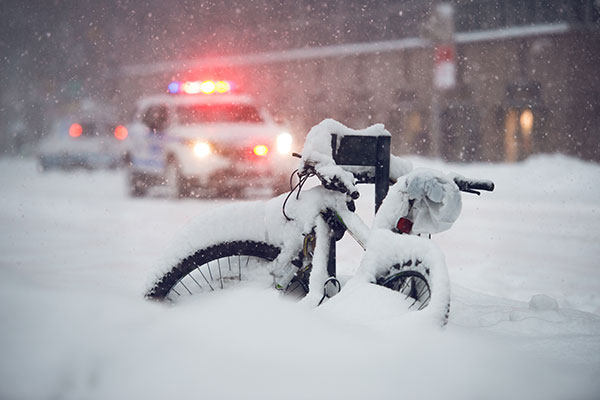When you know a snowstorm is coming, there are steps that every home and condo should take. We usually secure the windows, locate snow shovels, and know how many inches of snow to expect.
For a condo association, there are a few additional responsibilities beyond staying personally safe. In a shared building, it's essential to batten down the hatches and make sure that essential shared amenities like heat and hot water are available to everyone to stay safe and warm in the upcoming storm.
Even with individual HVAC units, the building unit is essential to keeping your whole community warm and safe.
Your HVAC furnace is a big part of snowstorm safety - it will be the primary way to keep the Arctic cold at bay. Your furnace may need to work harder than it has all winter up to this point, and the HVAC system must be ready to keep you warm. Should the power go out, you will want a backup plan or three to keep your entire condo building warm until repair services can reach you.
Let's dive into the steps to prepare your HVAC for snowstorm safety.
1. Replace the Air Filter
Keeping up with a snowstorm can put extra stress on your HVAC system. It's best to start with clean air ready for the demands of a shuttered and well-insulated building.
2. Stock Up on Backup Filters
If you foresee being snowed in for weeks, stock up on air filters. Sealing the building against cold increases the use of each filter, so you may need to change them more often than usual. Many condo associations already have a filter stockpile and if you don't, stock up.
3. Seal Windows & Repair Sashes
Don't skip your window sealing just because you have a good heater. Sealed windows trap the heat inside, empowering your furnace's efficiency. Send your maintenance team a caulk gun to ensure there are no cold rattling windows in common areas.
4. Schedule Furnace Cleaning and Maintenance
Has your building's heating system been maintained? Furnaces, boilers, and electric heating systems must be cleaned and tuned up at least once every three years. Furthermore, older models should be inspected once a year, preferably before winter or the first major storm, to ensure that the heater will last through the coldest months of the year.
Technicians will clean and inspect the HVAC heating system, then replace any worn or broken components. They may advise how best to handle your heater so it continues to work and when to plan to replace your current unit.
5. Replace an Old Heating Element
Some elements of the heater may need to get replaced. Often, these are small wires or plastic fasteners, but essential parts can break as well. Most often, a heater will fail when the heating element or method ages.
As the materials get older, it loses efficiency and sometimes the ability to convey heat. On the other hand, your heater may regain several years of service with one of the essential heating elements replaced.
6. Clear & Shield HVAC Vents
Find where your HVAC exhaust vents are outside the building. Your heat pump, exchange, and even the dryer exhaust are all worth identifying. Make sure your HVAC vents are not blocked or iced over. Iced vents can cause problems with your heating system during a snowstorm, especially one of long duration.
7. Straighten Doors & Reinstall Weather Stripping
Insulate your building to improve how well it holds heat. By retaining heat, your HVAC is relieved of some work. The system can sometimes stop pumping heat for a while. Look to the exterior doors - and doors to under-insulated storage areas.
Tighten the hinges so that the doors hang straight. Then check the weather stripping quality. These rubber strips make a solid and essential seal but wear out every 2-5 years and need replacement.
8. Improve Attic Insulation
The insulation in your attic can make a huge difference. Consider how much cold could come in or how much heat could escape through the top of your building. The more quality is insulating in your attic, the better. We suggest a fresh layer of blow-in for a quick pre-storm solution. For longer-term planning, consider finishing the attic with living space insulation.
9. Prepare a Backup Generator
Your furnace will only work as long as the power stays. Unfortunately, in some snowstorm situations, power lines go down. To keep the condo building warm and safe, consider investing in a backup generator. This way, you can use a supply of stored fuel to keep your furnace running and ensure that the building stays within safe internal temperatures.
10. Clean Interior Vents and Ducts
Lastly, take some care of your vents and ducts. If there's a chance you will be indoors for a few days after the snowstorm, prepare for cleaner air. Clean your vents and have the building's ducts cleaned of all old dust and pollen. This will make your snowed-in time much healthier for community breathing.
Final Thoughts
Preparing for snowstorm safety involves more than taping windows or bringing in firewood. Your entire condo community will more likely be safe and warm during the next winter storm if your HVAC is well-maintained and ready for the added stress. A little fresh caulk for the windows and a well-tuned furnace should ensure your community stays cozy as temperatures and inches of snow start to drop.

